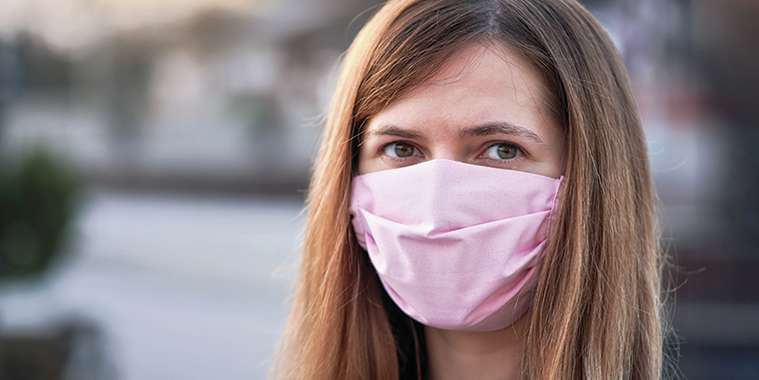Let’s face it. (See what I did there?) This year has been anything but normal. We’ve all had to adjust to a new way of thinking about our social interactions that is anything but natural for human beings. We’ve had to adjust to working from home or not working at all; from wearing gloves to pump our gas and standing six feet apart from others in the line at the grocery store.
However, one thing remains clear. The Covid-19 virus isn’t going away and we all have to do what we can to keep its spread under control. By now, everyone should know that washing hands is at the top of the prevention list. Covering your mouth if you sneeze or cough is another. But adding an extra layer of protection through the use of face masks when you go out in public is recommended.
With the Manitoba government now officially mandating the use of face masks at all public venues, it’s more important than ever that you comply.
Many people already have disposable face masks on hand, or they’ve purchased cloth masks at various stores around the city. It’s a good idea to keep a spare mask in your vehicle or pocket or purse, but what if you’re going out and you don’t have a spare? Or if you simply have some fabulous fabric and want a custom face covering that complements your outfit. (Yes, some of us are that vain. Don’t judge.)
Here are two ways to make homemade face coverings from items you already own to help prevent you from spreading your respiratory droplets to everyone you come into contact with.
No-sew method using a T-shirt
Materials:
• T-shirt
• Scissors
1. Cut the bottom off a t-shirt (front and back), measuring about 18 to 20 cm, or 7 to 8 inches from the bottom. The front and back of the t-shirt fabric should be thick enough that you cannot see daylight through it.
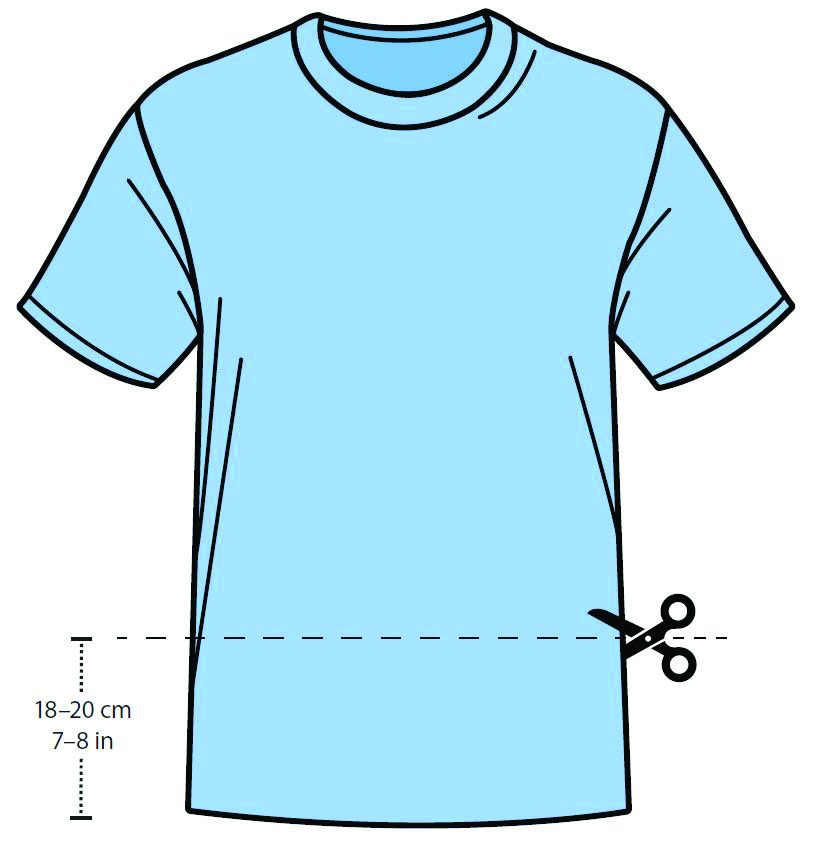
2. With this fabric, make two horizontal cuts of 20 cm or 8 inches, on the top and bottom. Keep at least a 1 cm or 0.4 inches width between your cuts and the top and bottom edges of the fabric.
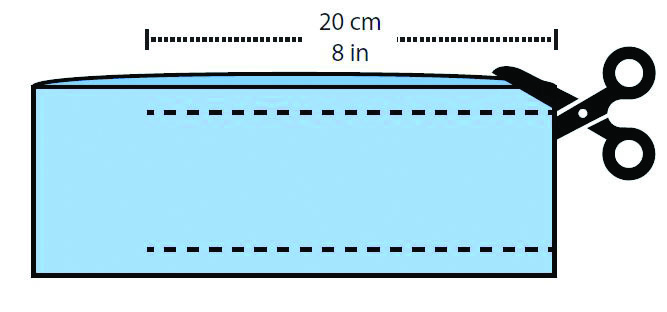
3. Cut out a panel of 5 cm or 2 inches from the larger piece of fabric by making a vertical cut. Discard the cut fabric. This will leave you with a C-shape.
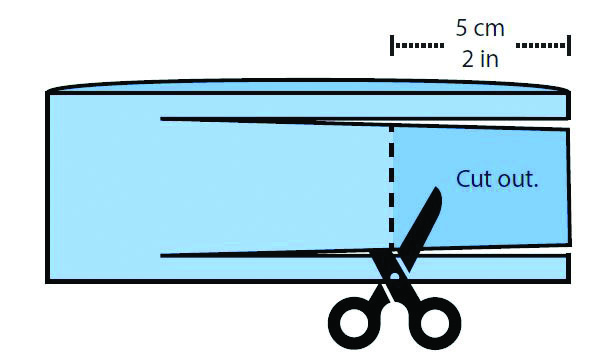
4. Snip the two pieces of fabric at the crease. This will give you a top and bottom set of tie strings. Now you have four strings.
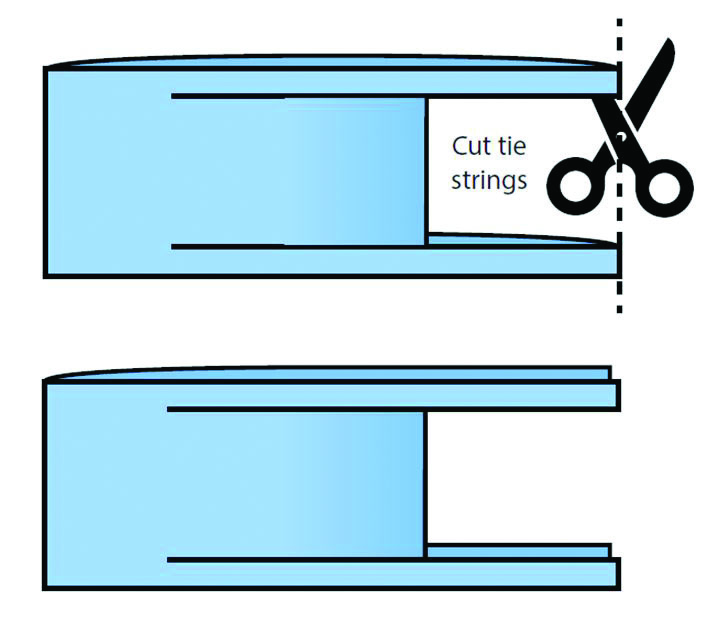
5. Open your fabric up, so that it lies flat. Fold the right-hand flap created between the tie strings in half horizontally, towards the centre of the mask. The edge of the fabric will overlap the centre crease. Repeat on the left-hand side, folding the fabric over each other. You will now have a mask with three layers of fabric to cover your nose and mouth.
![]()
![]()
![]()
6. Tie one set of strings around your neck, and the other set over the top of your head. The strings that attach over the top of your head will run along your cheeks and above your ears.
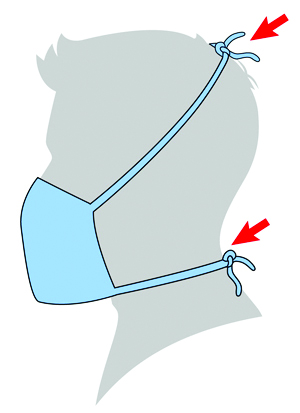
No-sew method using a bandana
Materials:
• Bandana (or square cotton cloth approximately 51 cm by 51 cm or 20.5 in by 20.5 in)
• Coffee filter or a folded paper towel
• Rubber bands (or hair ties)
• Scissors (if you are cutting your own cloth)
1. Cut a coffee filter horizontally across the middle. Keep the top with the rounded part.
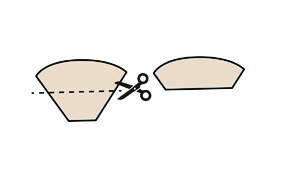
2. Fold a square bandana in half.

3. Put the rounded top of the cut filter in the center of your folded bandana. Fold the top of the bandana down over the filter. Then fold the bottom of the bandana up over the filter.
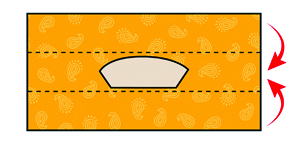
4. Insert the folded cloth into two rubber bands or hair ties, about 15 cm or 6 in apart.

5. Fold sides to the middle and tuck around the bands or hair ties.
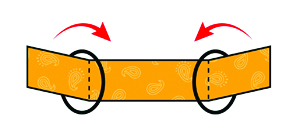
6. Pull the bands or hair ties around your ears.
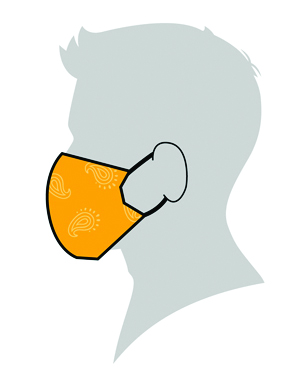
Wear your mask and know that others appreciate your consideration. And remember, there are people who can’t wear a face mask for various medical reasons and it isn’t up to you to judge them or berate them in public. One person who isn’t wearing a mask in a crowd of face mask wearers isn’t going to tip the outcome of the pandemic either way. So be kind to others. Together, one way or another, we’ll get through this.
For more information about cloth face masks, or for instructions on how to sew one if you’re handy that way, visit www.canada.ca/en/public-health/services/diseases/2019-novel-coronavirus-infection/prevention-risks/sew-no-sew-instructions-non-medical-masks-face-coverings



